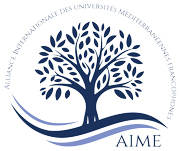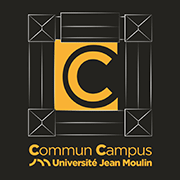AccueilRechercheProgrammes et productions scientifiquesThèsesThèses soutenuesThèses soutenues - 2024
-
Partager cette page
- Recherche,
- Philosophie,
CHEN Fei Hong
Rojak Phenomena and Border Crossing within Language, Ethnicity and Cuisine : Foodscape and Langscape in Postcolonial Malaysia
Thèse en Droit, soutenue le 13 juin 2024.
Le contexte local, ou en anglais ‘le paysage’, s’est avéré être un domaine de recherche sociologique qui méritait reflexion . Cette exigence s’impose en particulier pour sa déclinaison en contextes linguistique et culinaire : ‘langscapes’ (le mot-valise anglais combinant ‘language’ et ‘scapes’) et ‘foodscapes’ (le domain ou le paysage alimentaire). Prendre en compte langue et nourriture dans les espaces publics apporte des perspectives substantielles pour les sciences sociales et les études transculturelles. Dans cette thèse, nous avons concentre notre attention sur la Malaisie, un pays péninsulaire d’Asie du Sud-Est situé au nord de l’équateur. L’histoire anthropologique complexe de la Malaisie et la multiplicité des colonialisations ont conduit à un degré élevé de multilinguisme et de multiethnisme au sein de cette nation. En utilisant le terme rojak comme symbole du mélange ou de l’hybridation, reflétant les caractéristiques d’hétérogénéité et de porosité des frontières, cette thèse vise deux objectifs: D’abord, en Malaisie, langue et ethnie sont étroitement liée et sont des éléments essentiels de la construction nationale, influen?ant les relations interethniques. Cet aspect est mis en lumière par le phénomène du ‘translanguaging’ et de la semi-créolisation dans le Manglish (anglais malaisien), ce qui reflète l’évolution dynamique des identités ethniques, politiques et religieuses. Ensuite, l’étude de la variété des types de territoire ou ‘paysage’ notamment alimentaire et linguistique, a mis en évidence leurs frontières floues qui transcendent les domaines ethniques et nationaux, comme illustré dans le film malaisien Sepet, réalise par Yasmin Ahmad. L’extension du domain alimentaire jusqu’à la transformation du paysage urbain est illustrée par la ville de Malacca, qui est reconnu pour son riche patrimoine historique et qui a attiré écrivains et poètes dans les ?tablissements des détroits. Du point de vue architectural, les Peranakan Shophouses Strait Eclectic, reliés par des rues et des arcades de 1,50 mètre de large, sont très caractéristiques de la ville. La transformation de certaines Shophouses en restaurants peranakan ouvre sur un nouveau paysage alimentaire qui s’inscrit dans la tendance à ‘muséification du patrimoine’. Trois éclairages principaux sont mobilisées dans cette these. Premièrement, cette thèse se penche en profondeur sur l’histoire malaisienne et l’ethnologie de l’Archipel Malais. Deuxiemement, cette thèse porte un regard extérieur vers les enquêtes coloniales et postcoloniales. Troisiemement, cette thèse se projette vers un avenir marqué par la fragilisation des ‘frontières’, que ce soit dans la pensée, la géographie ou de la littérature. Les frontières se révèlent poreuses et multidimensionnelles, à la fois réelles et imaginaires.
Mots-clés : Orang Asli ; Rojak ; Sepet ; Chinois peranakan ; Hybridité ; Paysage alimentaire ; Paysage linguistique ; Frontière ; Poésie malaisienne ; Multiculturalisme et identité ; Nostalgie et exil ; le Triangle culinaire ; Stands de mamak ; Kopitiam ; Métaphores fermentées ; ?tudes postcoloniales
The landscape has proven to be a thought-provoking facet of sociological research, particularly through its subfields of ‘langscapes’ (neologism of the contraction of ‘language’ and ‘landscape’) and foodscapes. These subfields explore the presence of language and food in public spaces, providing substantial insights for social science and transcultural studies. In this work, we direct our focus on Malaysia, a Southeast Asia island-country located north of the equator. Malaysia’s complex anthropological history and multi-layered colonial background have contributed to a high degree of multilingualism and multi-ethnicity within the nation. With rojak, symbolizing mixture or hybridity, reflecting simultaneously the heterogeneity and border permeability characteristic of the country, this thesis pursues two objectives: First, in Malaysia, language is closely intertwined with ethnicity in which linguistic diversity is a contentious element within discourses on inter-ethnic relations and the nation-building process. This aspect emphasises the phenomenon of translanguaging and semi-creolization in Manglish (Malaysian English), which gives insight into the shifting self-identity dynamics influenced by ethnicity, religion, and politics. Second, the investigation related to the concept of landscape considers the integration of foodscape and langscape. This part underscores their blurred boundaries that transcend ethnic and national borders, as depicted in the Malaysian film Sepet directed by Yasmin Ahmad. The expansion of foodscape into the urban cityscape is exemplified in Malacca, renowned for its rich historical heritage that has attracted Strait writers and poets. In its architectural aspects, the Strait Eclectic shophouses, interconnected spatially through the ‘five-foot way’ corridors and street networks, assume a unique role. The transformation of certain shophouses into Peranakan restaurants represents a foodscape that aligns with the trend of “museumification of heritage”. To have a comprehensive context for this paper, we adopt three primary approaches. To begin, this thesis looks inward for two areas; they are Malaysian history and the ethnology of the Malay Archipelago. In addition, this thesis extends its perspective to look outward to explore colonial and postcolonial investigations. Finally, we look forward to the concept of ‘border’, which envelops border thinking, borderscape, and border writing. Borders are found to be porous and multi-dimensional, as well as real and imaginary.
Keywords: Criminal law ; Things ; person ; human ; summa divisio ; humanity ; robots ; animals ; transhumanism ; living ; personal data ; philosophy ; sciences ; personification of things ; subjectivisation of things ; reification of the body ; identity ; role of doctrine ; reasoning method of lawyers ; relations ; bioethics ; globalisation ; human enhancement ; biohacking ; internet of things
Directrice de thèse : Gregory B LEE
Membres du jury :
- M. LEE Gregory B., Directeur de thèse, Professeur des universités, Université Jean Moulin Lyon 3,
- M. H?GLUND Johan, Rapporteur, Professeur, université Linné, Kalmar, Suède,
- M. VILLARD Florent, Rapporteur, Professeur des universités, Sciences Po Rennes,
- Mme COAVOUX Sophie, Ma?tresse de conférences HDR, Université Jean Moulin Lyon 3,
- Mme JIN Siyan, Professeure des universités, Université d'Artois,
- Mme LABAUNE-DEMEULE Florence, Professeure des universités, Université Jean Moulin Lyon 3.
Président du jury : Florent VILLARD







